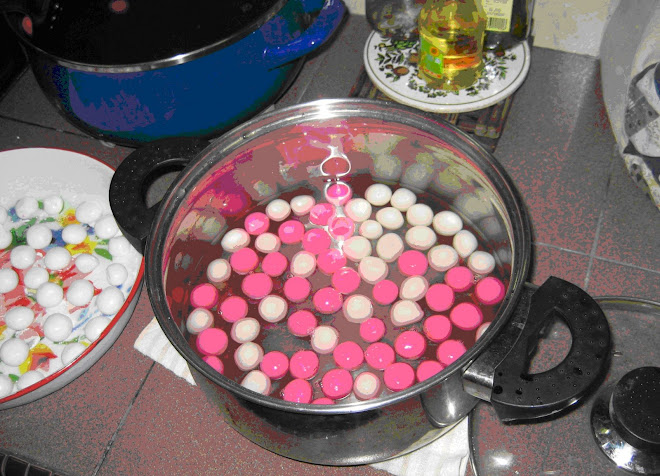
Traditional Torres Strait Islander Cookbook: favourite recipes from the Islands
Collected and compiled by Ron Edwards
The prolific bushie/folksinger/publisher/bushcraft collector/writer/illustrator Ron Edwards died in 2008. He left the rest of us a rich and lasting legacy of the culture of indigenous peoples up north Queensland and beyond to the islands of the Torres Straits. His publishing company Rams Skull Press published approximately 350 books on bushcraft, leatherwork, whipmaking, bush ballads, songs from indigenous tribes and the odd cookery book. Traditional Torres Strait Island Cooking is a collection of favourite recipes from the Straits. Edwards collected the material back in the 1960s but the collection was only published in 1988. Let’s not underestimate the curiousity in island cooking, with 3 editions under its belt it’s testament of the public’s growing interest in indigenous methods of cooking.
The book is apparently being used by younger generations of Islanders trying to reconnect with their ancestry by cooking traditional fare. The cooking of the Torres Straits is an interesting and diverse mix of culinary input from the Chinese, Indonesians and Japanese. This intermix of ingredients and techniques highlight the multicultural diversity of this little known region.
Islanders also cook using the ‘kup maori’ method: cooking over hot stones, yes, just like the hangis the Maoris of New Zealand love so much! Coconuts feature heavily in Islander cuisine as it will come as no surprise. Many dishes called ‘sabee’ are meat cuts or cassava and vegetables stewed in coconut milk. Taro and taro leaves and stems are another favourite of the Islanders – these delicious tubers take on another dimension when braised for hours in rich coconut mik.
The Islander love their fish and they have a version of the ceviche called numus. Sabee numus (raw fish) is any close, textured raw fish soaked in lime juice and coconut milk. Numus is raw fish steeped in a concoction of onion, garlic, baking soda and vinegar. There is a whole chapter dedicated to the beloved green turtle – a favourite with many traditional Islander and Aboriginal groups. I have partaken in a little green turtle stew, a Maori Islander friend flew all the way back from Weipa once with a tub of the stuff for me to try. It was an interesting texture, the gravy was slightly grainy – the meat tasted a little like pork but stronger flavoured, and I kept thinking there was a distinct aquatic quality to the meat somehow. My friend says that turtle blood is bright green!
I remember sucking on rubbery turtle eggs as a child. My grandmother brought them home from the wet markets one day and I remember squishing the rubbery egg sacs to get its contents out. I don’t remember the taste of them but memories of them being like flattened ping pong balls when we finished with them come to mind.
The book is broken up into an introduction of traditional cooking utensils; use of coconuts; meat; chicken; seafood; turtles; sambals; fruit; rice and dampers and sweet and savoury fruit salads.
There is a whole chapter dedicated to the beloved green turtle – a favourite with many traditional Islander and Aboriginal groups. I have partaken in a little green turtle stew, a Maori Islander friend flew all the way back from Weipa once with a tub of the stuff for me to try. It was an interesting texture, the gravy was slightly grainy – the meat tasted a little like pork but stronger flavoured, and I kept thinking there was a distinct aquatic quality to the meat somehow. My friend says that turtle blood is bright green! There are 8 recipes in the book for turtle. Turtle soup sounds interesting if anybody is up to making it, here is the recipe:
Turtle Soup
Turtle tripe, diced
1/2 kg turtle fat, diced
1kg turtle meat, diced
some small pieces of turtle liver, diced
set of turtle lungs, diced
6 turtle eggs
1 bunch lemongrass or 2 knobs of crushed ginger
¼ litre turtle blood
salt to taste
water
Place all ingredients except the blood in a pan, cove with water and simmer for one hour.
Thin blood with half cup of water, add this to the pan and simmer for another hour. Discard the lemongrass before serving.
There’s curried turtle flippers, and turtle sausages and scrambled turtle eggs too. I remember sucking on rubbery turtle eggs as a child. My grandmother brought them home from the wet markets one day and I remember squishing the rubbery egg sacs to get its contents out. I don’t remember the taste of them but memories of them being like flattened ping pong balls when we finished with them come to mind.
This recipe caught my eye:
Roast banana and turtle oil
12 half ripe bananas (plantains)
1 cup turtle oil
Place the half ripe bananas on hot coals until the skins are charred. Remove the skins by scrapping. Place the bananas in a dish and mash them. Stir in the turtle oil and serve.
Turtle oil is obtained by skimming it off when the turtle is being cooked in the shell and keeping it until needed.
This is an extremely rich dish and not to everyone’s taste.
Having set down some sensationalist-type recipes to tantalise the cogs of your culinary imagination, rest assured, there are some more modest recipes that you can use at home. This is a recommended read for anybody with an anthropological interest in indigenous peoples’ foods.
Below is a turtle flipper spatula given to me by my dear friend Muriwai, her family's eating memories are rich and steeped in a mix of traditional and contemporary dishes.


No comments:
Post a Comment